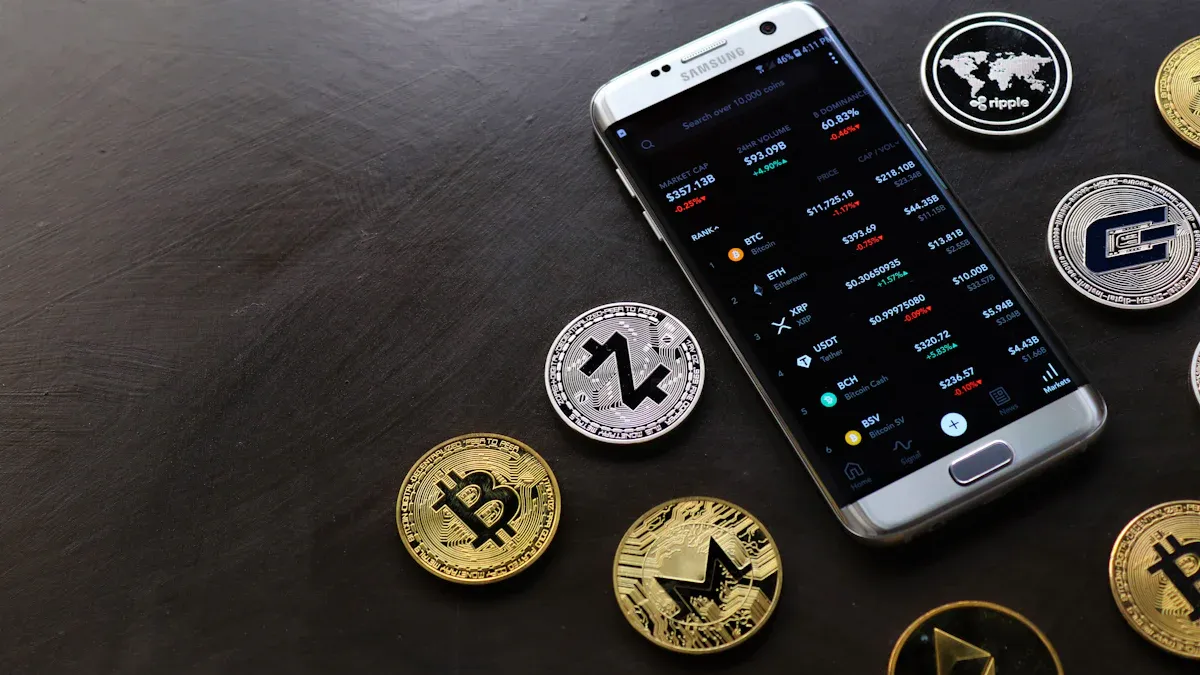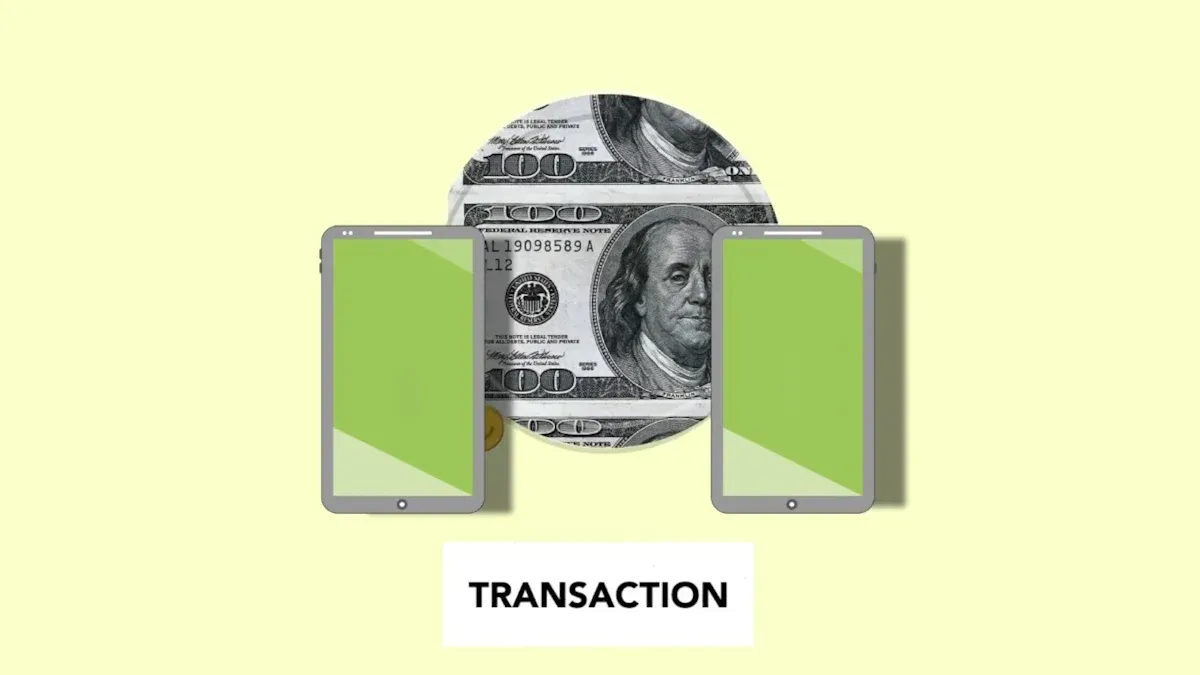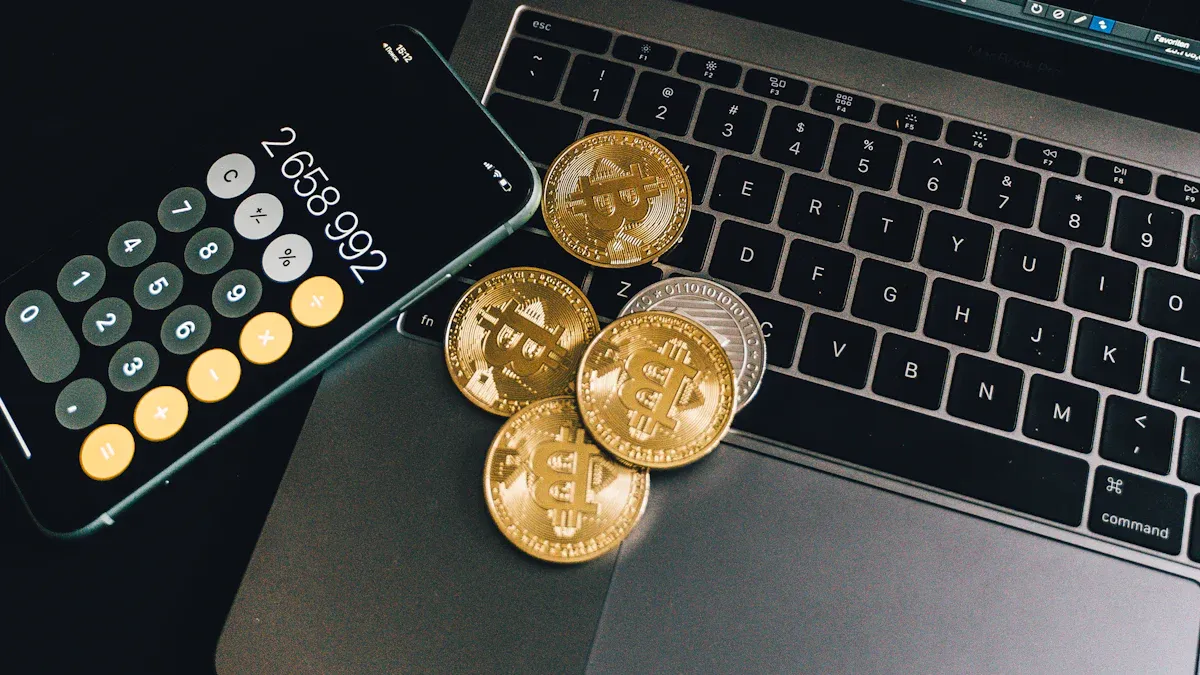- EasyCard
- Trade
- Help
- Announcement
- Academy
- SWIFT Code
- Iban Number
- Referral
- Customer Service
- Blog
- Creator
Stablecoin Cross-Border Payments: 5 Immediate Fee-Reduction Techniques

Image Source: pexels
Stablecoins (such as USDT) are reshaping global commercial payments with minute-level arrival, low handling fees, and 7x24-hour operation advantages. However, while enjoying convenience, you may still face handling fee costs ranging from 0.5% to 3%.
Traditional international wire transfers cost about $40-$50, while stablecoin payment network fees are usually below $1. This means stablecoin cross-border payments can save you up to 80-90% of direct transfer costs.
This is not a niche trend; its transaction scale is already enormous.
| Time Period | Amount (Trillion USD) |
|---|---|
| 2024 Forecast | 2.8 |
| 12 Months to May 2024 | 2.5 |
The goal of this article is to help your business minimize the costs of stablecoin cross-border payments.
Key Points
- Choosing TRON or Solana networks can significantly reduce USDT transfer Gas fees.
- Using DEX aggregators can find the optimal exchange rate, reducing spread losses during exchanges.
- Combining multiple small payments into one batch payment can effectively reduce overall transaction fees.
- Carefully comparing rates and exchange rates across different channels can optimize stablecoin deposit and withdrawal costs.
- Adopting professional payment gateways can automate payment management, systematically reducing costs and risks.
Technique 1: Choose the Right Network, Cut Gas Fees in Half Immediately

Image Source: pexels
Gas Fees: The Main Cost of USDT Transfers
Every transfer you make on the blockchain is like driving on a highway, requiring a “fuel fee” to have the network process your transaction. This fee is the Gas fee. It incentivizes network validators to process your transaction and ensures network security. Therefore, Gas fees are the primary cost component when transferring USDT.
Operation: Prioritize TRON or Solana Networks
Choosing different blockchain networks results in vastly different Gas fee costs. Currently, USDT mainly operates on Ethereum (ERC-20), TRON (TRC-20), and Solana networks. Although the Ethereum network is widely used, its transaction fees are usually the highest.
Comparing USDT transfer fees on Ethereum and TRON networks shows the difference clearly:
| Feature | ERC-20 USDT (Ethereum) | TRC-20 USDT (TRON) |
|---|---|---|
| Average Transaction Fee | $1 - $3 | $0.1 - $0.5 |
| Peak Period Transaction Fee | $5 - $15 or even higher | Rarely exceeds $1 |
Efficiency Comparison: Speed is Also a Cost In addition to fees, transaction speed is key to fund efficiency.
- TRON (TRC-20): Can process about 2000 transactions per second, with confirmation in just a few seconds.
- Ethereum (ERC-20): Processes only about 15 transactions per second, with confirmation possibly taking several minutes.
Therefore, when making USDT cross-border payments, you should prioritize requiring your counterparties to use the TRON (TRC-20) or Solana network for receiving or sending payments.
For the TRON network, you can further reduce costs using “energy rental” tools. You can rent energy from platforms like TronSave to pay transaction fees instead of directly consuming TRX tokens. This method is simple to operate and can usually save you up to 50% or more in Gas fees, bringing single-transaction costs below $1.
Technique 2: Optimize Exchanges, Reduce Spread Losses
When your business involves exchanges between different stablecoins (such as USDT to USDC) or between stablecoins and fiat, besides Gas fees, another hidden cost—“spread” (Spread)—is quietly eroding your profits.
Beware of Hidden Spreads on Centralized Exchanges
The spread is the difference between the buy price (Ask) and sell price (Bid) of the same asset on a trading platform. Simply put, when you buy, you pay a higher price; when you sell, you receive a lower price. This difference is the profit for the platform or market maker.
Spread Calculation Formula: Spread = Ask Price - Bid Price
For example, if USDT’s ask price is $1.002 and bid price is $0.998, the spread is $0.004. For a single $100,000 transaction, this means an immediate $200 exchange cost. For high-frequency or large-volume businesses, this fee accumulates quickly.
When exchanging on centralized exchanges (CEX), you usually can only passively accept the quotes provided by the platform, making it hard to avoid spread losses.
Operation: Use DEX Aggregators to Find the Best Exchange Rate
To get the best exchange rate, you should use decentralized exchange (DEX) aggregators. These tools are your smart “price comparison robots.”
DEX aggregators use advanced routing algorithms to automatically search hundreds or thousands of DEXs for the deepest liquidity and best price paths. They can even split a single transaction across multiple platforms to minimize slippage and spread losses, ensuring you get the most favorable execution price.
- Connect Wallet: Visit a DEX aggregator website and connect your crypto wallet (such as MetaMask).
- Select Tokens: Enter the tokens and amount you want to exchange.
- Find Optimal Path: The aggregator immediately displays the best exchange path and estimated execution price.
- Confirm Transaction: After confirming details, approve the transaction in your wallet.
Depending on the network you use, choose different aggregators to optimize costs:
| Network | Recommended DEX Aggregator |
|---|---|
| TRON / Solana | OpenOcean |
| Ethereum | 1inch, Matcha, ParaSwap |
By using DEX aggregators, you take control of exchanges and systematically minimize spread losses.
Technique 3: Batch Payments, Reduce Transaction Count
The Cost Trap of High-Frequency Small Payments
If your business needs to regularly pay small amounts to multiple suppliers, employees, or partners, you may be falling into a cost trap. Each independent USDT transfer requires a Gas fee. Even if a single fee is only $1, processing hundreds of payments monthly accumulates into a significant expense, directly eroding your profits.
An Argentine virtual assistant agency faced this dilemma, needing to process over 80 international payments monthly. After adopting stablecoin batch payments, the agency reduced payment processing time by 70%, significantly lowered operating costs, and improved contractor satisfaction.
This case clearly shows that optimizing payment count is a key step in fee reduction.
Operation: Consolidate Payments and Choose Network Idle Periods
The best strategy to counter high-frequency payment costs is “consolidate small into large,” using batch payments.
Batch payments technically bundle multiple independent transfers into one on-chain operation. This means you don’t pay Gas fees for each payment individually but pay a one-time network fee for the entire batch, diluting total costs across all transactions. Using contracts that support multicall can usually save 30-50% in Gas fees.
Besides consolidating payments, choosing the right transaction timing is equally important. Blockchain networks, like city traffic, have peak and off-peak periods. Transaction Gas fees surge during network congestion.
You can use professional Gas fee tracking tools to monitor network congestion and execute batch payments during idle periods.
| Network | Recommended Tool | Feature Description |
|---|---|---|
| Ethereum | Etherscan Gas Tracker | Provides real-time Gas prices, categorized by transaction speed |
| TRON | TRONSCAN | View network status, including energy and bandwidth consumption |
| Universal | Wallet Built-in Estimator | Mainstream wallets (like MetaMask) provide fee estimates before transactions |
By merging multiple payments into one and executing during low-fee network periods, you can systematically minimize average per-payment costs.
Technique 4: Select Channels Carefully, Optimize Deposit/Withdrawal Costs

Image Source: pexels
Converting stablecoins to fiat (withdrawal) or purchasing stablecoins with fiat (deposit) is the final link in fund flow. The cost of this link directly affects your final profits. Choosing the wrong channel can wipe out all previous savings.
OTC Withdrawal Rates and Exchange Rate Differences
Over-the-counter (OTC) trading is the main method for handling large deposit/withdrawal amounts. However, its cost structure is complex, mainly consisting of two parts: direct rates and exchange rate spreads.
- Direct Rates: Service fees charged by OTC platforms or merchants. This fee may be fixed or a percentage of the transaction amount.
- Exchange Rate Spread: The difference between the fiat exchange rate offered by the merchant and the real-time market rate. This is a hidden cost.
In some emerging markets, due to inefficient deposit/withdrawal channels, users pay an average premium of up to 4.7% when acquiring stablecoins. This is equivalent to a “hidden tax,” severely eroding the low-cost advantage of stablecoins.
Additionally, stablecoin payments are irreversible. Once you transfer USDT to a dishonest merchant, funds cannot be recovered. Therefore, choosing a reputable and transparent-fee channel is crucial.
Operation: Compare Multiple Quotes and Negotiate with Merchants
To optimize your deposit/withdrawal costs, you need to conduct due diligence and price comparison on payment channels, just like procuring key raw materials.
Core Operation Steps:
| Step | Key Actions | Goal |
|---|---|---|
| 1. Broad Comparison | Obtain quotes from multiple reputable OTC platforms or merchants. | Find the best current market rates and fees. |
| 2. Inquire Fee Structure | Proactively ask about all potential fees, including service fees, network fees, and bank withdrawal fees. | Avoid hidden costs and calculate the final received amount. |
| 3. Attempt Negotiation | For large or high-frequency transactions, your bargaining power is stronger. Communicate directly with merchants to negotiate lower rates. | Convert transaction volume into cost advantages. |
| 4. Build Long-Term Relationships | Establish long-term partnerships with 2-3 reliable merchants. | Gain more stable service and preferential long-term pricing. |
For example, when exchanging $100,000, a 0.5% rate difference means a $500 cost variance. By actively managing your deposit/withdrawal channels, you can firmly retain this profit.
Technique 5: Upgrade Stablecoin Cross-Border Payments: Adopt Professional Solutions
The previous four techniques can save significant costs in manual operations, but as business scales, manual management becomes a bottleneck for efficiency and security. Upgrading to professional payment solutions is the inevitable choice for systematic fee reduction and risk control.
Limitations and Potential Risks of Manual Management
Manually handling stablecoin cross-border payments means facing a series of complex and costly risks alone.
Manually matching on-chain receipts with invoices is not only labor-intensive but also highly error-prone, directly increasing operational risks. Fraudsters may also use business email compromise (BEC) to trick your team into transferring funds to wrong addresses.
When managing manually, you mainly face the following risk categories:
- Operational Risks: Address input errors, private key loss, or smart contract misconfiguration—any one can lead to permanent fund loss.
- Fraud Risks: Digital transactions are fast; once fraud occurs, funds are almost unrecoverable.
- Compliance Risks: The global regulatory environment changes rapidly, manually tracking anti-money laundering (AML) and know your customer (KYC) requirements across regions is extremely complex, non-compliance risks fines or even lawsuits.
These risks not only erode your profits but can also severely damage your business reputation.
Operation: Use Payment Gateways to Achieve Automated Fee Reduction
Professional crypto payment gateways, such as Biyapay or Coinbase Commerce, provide one-stop solutions that automate and systematize fee reduction operations.
These platforms fundamentally solve manual management pain points through technology. Their core advantages include:
| Automation Feature | Achieved Effect |
|---|---|
| Smart Network Selection | Automatically selects the lowest Gas fee blockchain network (such as TRON) for transactions. |
| Automatic Batch Payments | Merges multiple small payments into one transaction, significantly diluting per-payment Gas costs. |
| Smart Routing | Dynamically selects optimal payment paths, ensuring transaction success rates and reducing failure costs. |
| Compliance & Risk Control | Built-in AML/KYC tools automatically screen high-risk transactions, simplifying compliance processes. |
By adopting these professional solutions, you no longer need to worry about network selection, Gas fee calculation, or tracking compliance policies. The platform automatically executes optimal strategies, not only systematically reducing the overall cost of stablecoin cross-border payments but also significantly improving fund turnover efficiency through automated invoice and payment processing. This allows you to focus on core business growth rather than tedious payment management.
Mastering cost control in stablecoin cross-border payments boils down to five key operations:
- Choose the Right Network: Prioritize low-fee networks like TRON.
- Optimize Exchanges: Use DEX aggregators to reduce spreads.
- Batch Payments: Merge transactions to dilute Gas fees.
- Select Channels Carefully: Compare multiple quotes to optimize deposit/withdrawal costs.
- Adopt Professional Solutions: Use payment gateways for automated fee reduction.
Stablecoins are becoming an efficient “email version of money,” with increasingly widespread applications. We recommend you take immediate action, evaluate your current payment processes, apply the techniques in this article, and start a new chapter in efficient, low-cost global fund management.
FAQ
Which stablecoin should I choose?
USDT is currently the most liquid and widely used option. Most of your counterparties likely support it. USDC is also a reliable alternative, known for strict compliance and transparency. You can choose based on business needs and counterparty preferences.
How is the security of stablecoin payments ensured?
Stablecoin payments themselves are secure. You need to ensure fund security by choosing reputable trading platforms and payment gateways. At the same time, properly store your wallet private keys and double-check transaction addresses to prevent operational errors and fraud risks.
What if my counterparty only accepts Ethereum (ERC-20)?
You can proactively communicate with them, explaining the low-fee advantages of networks like TRON. If unchangeable, use DEX aggregators or professional payment gateways for exchange and payment. These tools help find the lowest-cost cross-chain payment paths.
As a business, how do I start using stablecoin payments?
You can start by creating a multi-chain supported wallet, such as Trust Wallet or MetaMask. Then, purchase a small amount of stablecoins (like USDT) from compliant channels and try a small transfer on the TRON network to familiarize yourself with the entire process.
*This article is provided for general information purposes and does not constitute legal, tax or other professional advice from BiyaPay or its subsidiaries and its affiliates, and it is not intended as a substitute for obtaining advice from a financial advisor or any other professional.
We make no representations, warranties or warranties, express or implied, as to the accuracy, completeness or timeliness of the contents of this publication.




Contact Us
Company and Team
BiyaPay Products
Customer Services
BIYA GLOBAL LLC is a licensed entity registered with the U.S. Securities and Exchange Commission (SEC No.: 802-127417); a certified member of the Financial Industry Regulatory Authority (FINRA) (Central Registration Depository CRD No.: 325027); regulated by the Financial Industry Regulatory Authority (FINRA) and the U.S. Securities and Exchange Commission (SEC).
BIYA GLOBAL LLC is registered with the Financial Crimes Enforcement Network (FinCEN), an agency under the U.S. Department of the Treasury, as a Money Services Business (MSB), with registration number 31000218637349, and regulated by the Financial Crimes Enforcement Network (FinCEN).
BIYA GLOBAL LIMITED is a registered Financial Service Provider (FSP) in New Zealand, with registration number FSP1007221, and is also a registered member of the Financial Services Complaints Limited (FSCL), an independent dispute resolution scheme in New Zealand.




















